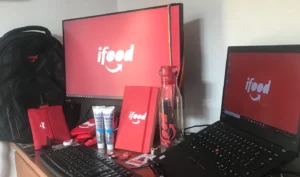Meet the winners of the competition funded by Elon Musk to promote solutions that remove 10 gigatons of CO2 of the atmosphere
The challenge: find an innovative solution to remove 10 gigatons of CO2 of the atmosphere per year until 2050. The prize: US$ 100 million. This is the proposal of one of the active competitions in the XPRIZE, a non-profit organization that, on April 22nd, awarded the first round of winners. In total, there were 15 projects, coming from nine countries, and each one received US$ 1 million to invest in the development of solutions.
The competition funded by Elon Musk (which recently purchased Twitter for US$ 44 billion) and his foundation offers US$ 100 million for the best projects that rebalance the carbon cycle and avoid rising temperature of our planet.
In 2025, the finalist projects will be announced, which will share US$ 80 million to be applied to research and development of solutions. Of this amount, US$ 50 million will be allocated to the winning project and US$ 30 million will be distributed among up to three other initiatives. An extra prize of US$ 5 million for university student projects completes the total award amount – the list of 23 award-winning initiatives can be seen here.
Even after this first round of prizes, the US$ 80 million is still in the game. To compete in them, you must follow the competition requirements and register by December 1, 2023 (find out more here). Anyone can participate, individually or in teams (from small and medium-sized businesses, startups, university groups, high school students and community organizations).
In 27 years of existence, XPRIZE has launched 25 competitions and distributed US$ 269 million in prizes, in addition to gathering more than one million supporters. One of the most recent is Fabricio Bloisi, president of iFood, who joined the XPRIZE Innovation board in June 2021.
What were the winning solutions?
Underground storage
O Calcite (from 8 Rivers Capital, USA) captures CO2 air and stores it permanently underground. And it is “recyclable”: the calcium used to capture the element is regenerated to absorb more carbon dioxide from the atmosphere in a second moment. “The process allows for rapid carbon absorption on a large scale and at low cost,” says the company on its website, estimating a carbon removal cost of less than US$ 100 per ton.
Capture equipment
The Dutch Carbyon want to remove CO2 of the atmosphere with equipment the size of a wind energy generator — and promises “extreme energy efficiency and low manufacturing costs”. The machine has a rotating drum made from a modified material to capture the gas more efficiently and at a lower energy cost: €50 per ton.
Express mineralization
The partners Heirloom (USA) and Carbfix (Iceland) propose using rocks to absorb CO2 that is in the air. The gas captured from emission sources (such as factory chimneys) is dissolved in water, and the gasified liquid interacts with rock formations, such as basalt, to form a rock that stores carbon dioxide. Thus, mineralization happens in days, not years.
Mineralization in the mountains
The process was also used in Project Hajar, a partnership between Mission Zero Technologies (United Kingdom) and 44.01 (Oman). Combining two complementary technologies, the idea is to remove CO2 present in the Al Hajar mountain region, in Oman and store it in rocks (more specifically in underground peridotite, abundant in the region and with great potential for mineralization).
Reuse with renewable energy
A Sustaera (United States) developed in its project a new direct air capture technology (DAC, acronym in English for direct air capture) that uses renewable energy to remove, replace and reuse carbon dioxide that is sequestered from the atmosphere.
Electrochemical removal
The companies Verdox (USA) and Carbfix (Iceland) also propose carbon mineralization. The difference is that here the capture is done with Verdox technology for electrochemical carbon removal — a process carried out with 70% less energy compared to other techniques, according to the company.
Turbocharged charcoal
O Bioeconomy Institute Carbon Removal Team, from the University of Iowa (USA), created a pyrolyzer (equipment that performs pyrolysis, a thermochemical reaction) to sequester carbon dioxide from the atmosphere with a better cost-benefit ratio. The team uses biomass from plant residues (rich in carbon extracted by plants) to produce the biochar, a charcoal used in agriculture to improve soil health and increase its carbon storage potential. Its two pyrolyzers are capable of sequestering a thousand tons of carbon per year.
Algae farms
With an algae farm that occupies an area of more than 160 hectares (which is equivalent to approximately 160 football fields), the Global Algae Innovations, from the United States, aims to capture 7.5 thousand tons of CO2 from nature, which will be fixed by algae through their photosynthesis process.
Soil removal
The French Net Zero it also uses pyrolysis to sequester carbon from the atmosphere. His solution is to use waste from agricultural production as raw material for the production of biochar, which, when used in soil, removes carbon. According to the IPCC (acronym in English for Intergovernmental Panel on Climate Change), if implemented on a global scale, charcoal could remove 2 billion tons of CO2 per year from the air.
Farmers in the carbon market
The project PlantVillage, from Penn University (USA), wants to extract one billion tons of carbon per year from the atmosphere and, at the same time, benefit low-income farmers in Africa, who would be trained to grow traceable trees to sell carbon credits. Its founder, David Hughes, believes that with the support of artificial intelligence it is possible to permanently sequester 1 ton of carbon per year at less than US$ 25 per ton.
Biomass recycling
Takachar (Kenya) and the University of British Columbia (Canada) joined together in Takachar & Safi Organics to transform plant residue (biomass) into products that can be sold around the world. To avoid burning this waste, which contributes to air pollution, Takachar developed a cheap and small piece of equipment that connects to harvesting tractors and converts biomass into fuels and fertilizers, reducing smoke emissions into the atmosphere by up to 98%.
Extraction from the oceans
O Catch, from Caltech, wants to extract CO2 of the oceans through a process baptized of “electrochemical process of pH oscillation”. The team developed a material called a bipolar membrane, which breaks water molecules into protons and hydroxyls (negatively charged hydrogen and oxygen molecules). The protons (the positively charged hydrogen ions) are inserted back into the water, leaving it slightly acidic. This slight acidification converts the bicarbonate ion into CO2 dissolved, which can be extracted from water and stored in geological formations, such as already explored gas and oil reservoirs. After extracting the CO2, the decarbonated water is combined with the hydroxyls and returns to the sea with a slightly higher pH — and with the capacity to absorb more carbon dioxide from the sea.
Seaweed Farm
The proposal of Marine Permaculture SeaForestation from the Climate Foundation, from the Climate Foundation (United States, Philippines and Australia) is to create a seaweed farm in the ocean as part of a strategy for food security, marine ecosystem regeneration and carbon sequestration. According to the institution, each square kilometer of marine permaculture could capture thousands of tons of CO2 per year and store them in the depths of the ocean.
Mine waste to restore oceans
The technology developed by Canadians from planetary purifies mine waste and transforms it into a mild, non-toxic antacid, which is released into the ocean to restore pH levels (today more acidic due to climate change) and accelerate the natural process of CO extraction2 atmosphere through marine waters. According to a note published on its website, the solution combines four benefits: “removal of gas from nature, production of green hydrogen (fossil fuel substitute), cleaning of mine waste and restoration of the oceans”.
Mineralization using mine waste
A similar solution was developed by the Canadian company Carbon Minerals, which intends to use mine tailings to remove CO2 of the atmosphere. Its technology optimizes the process using rocks, through carbon mineralization, which has been accelerated. “We have techniques that allow us to increase these rates by a factor of three or five, so we have some sites making hundreds of thousands of tons of CO2 per annum", said Greg Dipple, co-founder of the Canadian university-based company.


